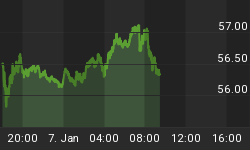Oil stocks have been performing dismally this year, and oil prices have failed to sustain a rally, so why are these stocks still attractive? Low valuations and high dividend yields, say analysts.
Supermajor oil companies are living a new reality that is based on new profits in a forever-low oil price environment—and globally, analysts say, the oil sector is a great investment.
Value has returned, because international oil giants have adapted.
The initial enthusiasm over OPEC’s production cut deal died out rather unceremoniously, and oil prices only enjoyed a brief rally, hammered down continually by rising U.S. supply and slower-than-expected drawdowns on inventory.
Since the beginning of the year, the oil stocks have underperformed the broader market indices both in the U.S. and in Europe.
As of the early morning on August 18, the Stoxx Europe 600 Oil & Gas index—which includes Europe’s majors Shell, BP, Total, Statoil, and Eni, among others--was down 11.94 percent year to date. At the same time, the Stoxx Europe 600 index was up 4.27 percent year to date.
It’s all rather bleak. Until you look at dividend yields and valuations.
Take the oil sector in Europe, for example. It has the highest dividend yield, so there’s value in investing, according to two analysts who spoke to CNBC’s Squawk Box this week.
In the European market, the oil sector has a high dividend yield of about 6 percent—the highest there is—which adds up to real value, says Nick Nelson, head of global and European equity strategy at UBS.
According to Nelson, oil prices could move up toward US$60 by the end of the year, due to underinvestment in projects in 2015 and 2016, which could lead to a crunch in supplies in 2019 and 2020.
The looming shortfall in supplies in just a few years is not a new prediction.
In March this year, the International Energy Agency (IEA) said that unless the industry approves fresh investments in new projects, global oil supply may be struggling to catch up with demand after 2020, which could result in a sharp jump in oil prices.
For the nearest term by the end of this year, another expert, Beat Wittmann, a partner at Porta Advisors, told CNBC that he saw the range for oil prices somewhere at between US$45 and US$60.
Related: Russia Claims To Have Invented Alternative To Fracking
The upper end of that projection--oil prices at US$60--is below most of the current analyst forecasts, with expectations for the WTI price predominantly in the low US$50s, or below.
Like Nelson, Wittmann also believes that there’s “great value in supermajor oil companies.”
Supermajors have slashed costs and capex, and “they’ve digested and readjusted balance sheets and quite frankly that investment case does not so much depend on if the oil price is at $50 or $60,” Wittmann argues.
The oil sector globally is an attractive play for investors right now, according to the expert.
Supermajors have indeed realigned plans and investments to the new normal in oil--around US$50—half the oil price they were accustomed to in the 2014 pre-crash dizzy spending days.
Now Shell is getting ready for ‘lower forever’ oil prices, its chief executive Ben van Beurden said at the Q2 results release last month/
BP is also setting its strategies for the lower-for-longer oil reality.
“BP is continuing to plan for a lower oil price world,” chief executive Bob Dudley said earlier this month, adding that “I’m not expecting big shifts in prices anytime soon and a price of $50 a barrel looks like the right number to plan on for the rest of the decade.”
According to Goldman Sachs, Big Oil is now repositioning itself for better profitability and cash generation in the oil-at-US$50 world than they were in the US$100-oil price environment, due to simplification, standardization, and deflation.
Related: Natural Gas Prices Poised To Rise As Exports Boom
In the second quarter this year, Europe’s Big Oil generated cash capable of covering 91 percent of the companies’ combined outlays on dividends and capital expenses, Goldman Sachs said.
Oil stocks have suffered alongside oil bulls that had bet on significantly higher oil prices, but, according to the experts who spoke to CNBC, now may be a good time to invest in the energy sector.
By Tsvetana Paraskova for Oilprice.com
More Top Reads From Oilprice.com:
















